We’re now halfway through my list of reading highlights from the 2010s. I’ve really enjoyed compiling this list and reminiscing about some beloved books. Let me know if you’ve read any.
You can also read my previous instalments, nos. 50-41 and 40-31. Now, on to the next ten…
30. The Hottest Dishes of the Tartar Cuisine by Alina Bronsky, tr. Tim Mohr (2011)
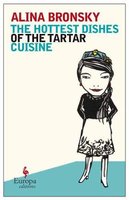
Now we come to one of the most memorable characters in my list: Rosa, a grandmother who will go to extreme lengths to improve her family’s lot, or maybe it’s to improve her own self-worth. Alina Bronsky’s novel is a darkly humorous family saga that turns bittersweet when we see that Rosa’s control over her world has limits. Even as I write this, I can remember what it felt like to read that splendid opening scene, and to realise where the book was heading in its final stages.
29. Like a Mule Bringing Ice Cream to the Sun by Sarah Ladipo Manyika (2016)
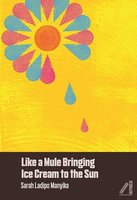
This is such a vivid exploration of how the person inside may not be as they appear to the outside world. Morayo – a retired literary professor and a vivacious, compelling presence – breaks her hip and has to recover in a nursing home. The contrast between her old life and where she now finds herself could hardly be greater. This novel was based on a short story I’d read a few years previously; it was a pleasure to see how different-yet-similar the book was.
28. Pub Walks in Underhill Country by Nat Segnit (2011)
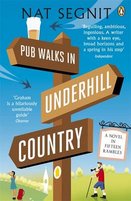
The idea of this book caught my imagination: a novel narrated in the style of a ramblers’ guide. I had to see what that was like – and it really works. We are introduced to earnest, bumbling (but is he?) Graham Underhill, who lets his disintegrating personal life intrude on his account of walking, and the results are very amusing. But the rambling-guide style is also Graham’s way of putting order on the world, and when that starts to slip – when he’s wandering dejectedly around a series of London pubs – the book turns serious.
27. The Boy Who Stole Attila’s Horse by Ivan Répila, tr. Sophie Hughes (2015)
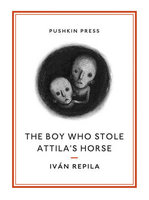
I didn’t just read this book: it came with its own cartoon in my mind. I thought of it as scratchily animated, with each chapter in a slightly different hue. This is the tale of two brothers trapped at the bottom of a well, trying to get out. Their perception of the well and themselves changes subtly. There is a strong ‘storybook’ quality to the prose, and the sense of a solemn allegory underneath it all.
26. Skippy Dies by Paul Murray (2010)
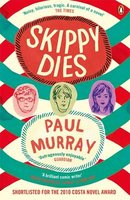
When I was looking through publishers’ catalogues for interesting new books at the start of the decade, this was one that really stood out to me. A 661-page Irish boarding school comedy with overtones of quantum physics? I had to see what this was like – and it succeeded at every level for me. I don’t think I’ve ever read such a long book that carries its length so lightly. It’s a very funny novel that also has some deeply affecting scenes. It weaves together a number of disparate themes, and makes them all work together. It was a reading experience all of its own.
25. Mildew by Paulette Jonguitud, tr. the author (2015)
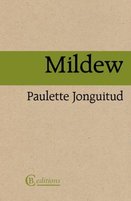
As I began to explore the small press landscape more, there were some publishers I just came to trust, like CB Editions. I also found that quite a bit of interesting Mexican literature was being published in translation at this time. So it was a no-brainer that I’d read a Mexican novel from CB Editions.
It turned out to be excellent. The day before her daughter’s wedding, Constanza finds mildew growing on her body. What follows is a disorienting account that dissolves the boundary between reality and imagination. Jonguitud’s language creeps through the reader, just like the fungus creeping through Constanza. In the 2010s, I developed a taste for short and strange novels that bring language to the fore. Mildew is an example of why that happened.
24. A Girl is a Half-formed Thing by Eimear McBride (2013)
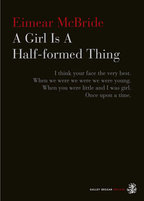
Looking back, this feels like a significant book in several ways. It established Galley Beggar Press as a key publisher. It also helped draw wider attention to less conventional fiction, which is where I’ve found my own tastes heading. Eimear McBride’s novel was an important one for encouraging me to have at go at ‘difficult’ books. The fractured language of Girl seemed forbidding at first, but everything fell into place once I found the right way to read it.
I came relatively late to this book – I didn’t read it until a year after it was published, by which time I’d heard a lot about it. In a sense, this doesn’t feel like a book that I discovered for myself, which could be why it’s not higher up my list. But reading it was a vital experience.
23. The Life of Rebecca Jones by Angharad Price, tr. Lloyd Jones (2010)
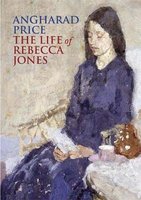
There was a time, when I started to get more into translated fiction, that I’d go round the bookshop and buy books just because they were in translation. This short novel caught my eye because it was translated from Welsh, the first such book I had come across.
I’m so glad it happened, because this is a special book: quieter than many to come on my list, but no less affecting. The author’s great-aunt looks back on the long life she has spent in the same valley. It’s a rich and full life, because memory and reading mean as much to Rebecca as experience. The weave of this book – its texture – is what I remember most.
22. Redemption in Indigo by Karen Lord (2010)
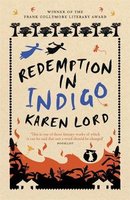
Redemption in Indigo had been getting attention in my corner of the SF blogging world from its first publication, but I didn’t catch up with it until it gained a UK edition a couple of years later. It’s based on a Senegalese folktale, and sees a spirit trying to persuade a human woman to give him back the magical Chaos Stick.
The twist is an underpinning of quantum physics, which opens out the traditional morality of a folktale. There are choices to be made, but the possibilities haven’t collapsed into a single reality. So, although the novel insists there’s a moral to the story, that moral is left for the reader to decide. The contrasts and contradictions made this book stand out to me – and the humour.
21. Pocket Notebook by Mike Thomas (2010)
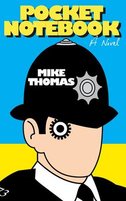
The original cover of this book was a riff on the famous cover of A Clockwork Orange, but with a policeman. I saw it on Twitter and loved the idea of it, but didn’t try the book until a year later. I shouldn’t have waited.
Reading this novel was something else, one of the most rawly intense memories on my list. It’s the tale of a steroid-addicted copper who goes off the rails, all the while convinced that what he’s doing still makes sense. Mike Thomas draws the reader into the character’s mindset so completely that it’s hard to shake off. The matter-of-fact detail of the policeman’s notebook is a chilling counterpoint, because we know what it’s hiding.
31st May 2020 at 4:45 pm
I finally caught up on these highlights posts and have to report I actually read one of them so far – “The Hottest Dishes of the Tartar Cuisine” by Alina Bronsky, tr. Tim Mohr (2011) and found it delightful.
Reading translated books has gone down for me and I don’t know why – maybe it’s more attention to nonfiction? Those and crime books don’t get translated a lot. I don’t know. I used to read a couple a month or so, but now it’s down to one every couple months. I do still keep track monthly.
I’m curious what will be on the 30 to 1 list.
Becky
1st June 2020 at 7:24 pm
I think both Mildew and The Boy Who Stole Attila’s Horse would be on my list – the latter probably higher up!
7th June 2020 at 3:47 pm
Mildew is tremendous and definitely deserves a place on your list.
The Lord I liked too (there’s a review of that and Mildew both at mine). Fun and clever. I’ve not read her others, have you?
14th June 2020 at 3:16 am
Really enjoying these lists.
Of these, I think I’m most curious about Mildew and The Life of Rebecca Jones.
20th June 2020 at 12:19 am
Thanks! Most people I’ve come across who have tried those two books really like them. The Life of Rebecca Jones went down well with my book group.